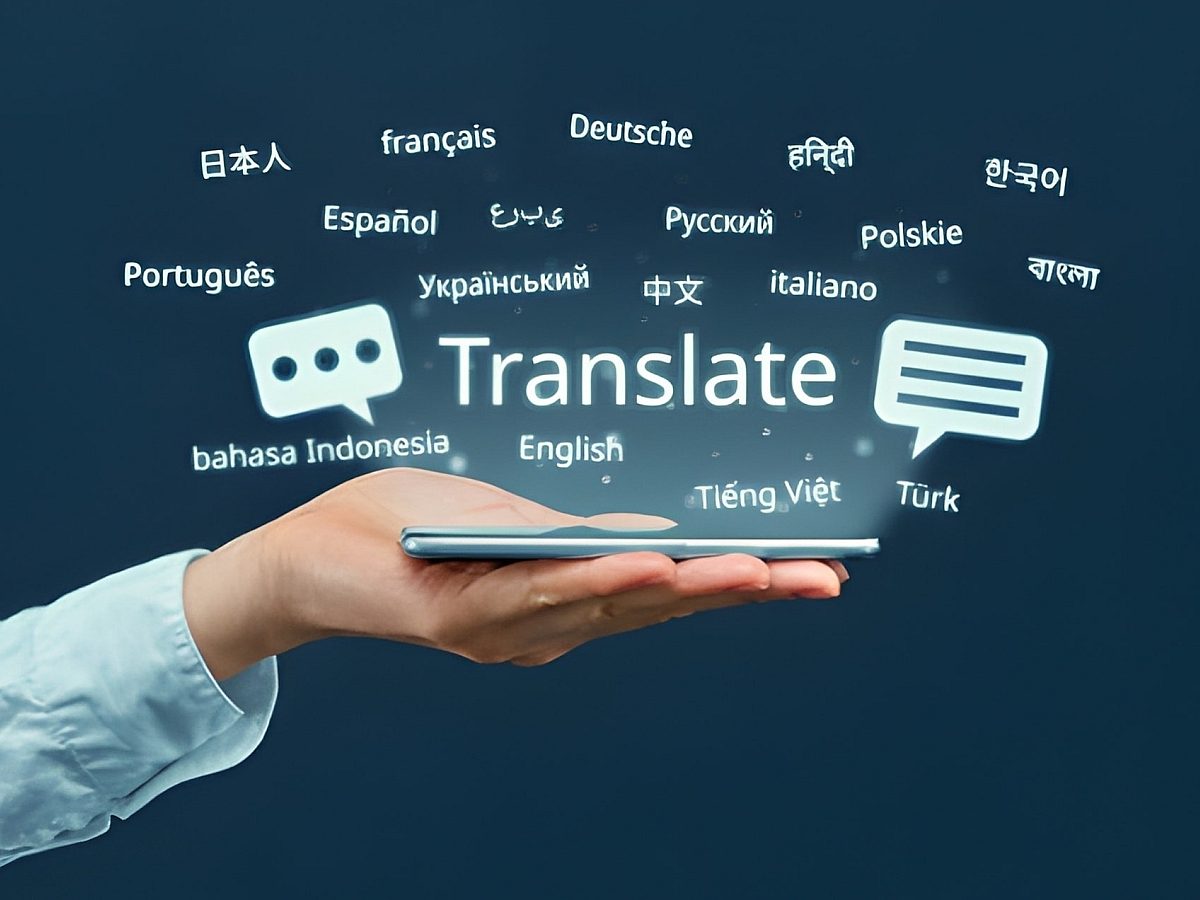If your business is expanding into global markets, you need to adapt your digital infrastructure to serve a new and diverse range of customers.
Internationalization and localization are both critical parts of this process.
These terms are frequently used interchangeably, but they refer to different—yet equally important—aspects of a successful global expansion
Internationalization is the process of building software that can be easily adapted to the needs of regional markets. Localization, on the other hand, involves the adaptation and translation of customer-facing content
Internationalization and localization are complementary. They work together to enable agile and engaging communication with global markets. Investing in just one will hurt your ability to compete outside the US.
In this article, you’ll learn the differences between internationalization and localization, why they are both important, and how to implement both to engage customers across global markets.
What is internationalization?
Internationalization is the process of designing and developing software in a way that it can be easily adapted to various languages, cultures and regions without requiring significant engineering changes.
The primary goal of internationalization is to build a foundation that supports multiple languages and regional preferences from the outset.
Internationalization comes before localization—it lays the groundwork for the latter. Software developers are responsible for proper internationalization.
Key aspects of internationalization include:
- Support for Multiple Languages: Internationalization allows for easy translation of text and other content. This includes using Unicode for character encoding and separating translatable text from the source code.
- Adaptability to Local Preferences: Internationalization ensures that products can handle different formats for dates, times, numbers and currencies.
Why is internationalization important?
Internationalization is important because, without it, businesses would need to reengineer their digital infrastructure every time they enter a new market. The process of adapting products for different markets would become cumbersome and expensive.
This would also reduce a company’s agility, making it much harder to adapt its digital resources to market changes. Without internationalization, your business cannot compete globally at a rate necessary for success.
Proper internationalization allows businesses to:
- Save Time and Resources: By building products with internationalization in mind, companies can avoid costly redesigns and redevelopment efforts.
- Improve User Experience: Products that cater to local preferences and languages offer a better user experience, which can lead to higher customer satisfaction and retention.
- Facilitate Faster Market Entry: Internationalized products can be quickly adapted for new markets, enabling businesses to enter multiple regions simultaneously.
What is Localization?
Localization is the process of adapting internationalized products to meet the specific linguistic, cultural and regulatory requirements of a target market.
Unlike internationalization, which is about creating a flexible framework, localization involves tailoring content and functionality to local needs. It adapts customer-facing content to more effectively engage consumers in the target region.
This content includes website content, marketing content, UI/UX, images and more.
Localization is handled by linguists, copywriters, translators and marketing professionals.
One major aspect of localization is translation, though effective localization goes much further than simply translating language. It also considers cultural nuance, design and user experience.
For example, when localizing an app for the Japanese market, its color scheme might need adjustment to align with cultural preferences. Japanese text is also read from top to bottom, which would require significant design changes.
Key aspects of localization include:
- Translation: Converting text from the source language to the target language.
- Cultural Adaptation: Modifying content to reflect local customs, traditions and cultural nuances. This includes changing images, colors, and symbols that might have different connotations in different cultures.
- Regulatory Compliance: Ensuring that the product adheres to local laws and regulations, such as data protection laws and accessibility standards.
Why is Localization Important?
Businesses need to localize their content to communicate effectively with their audiences.
Consumers around the globe communicate in very different ways. Some differences are simple, such as forms of measurement. Others are highly nuanced, such as cultural sensitivities and idiomatic expressions.
When your content engages your target on their terms and speaks “their language” (both literally and figuratively), you build trust with consumers. Higher trust leads to better engagement and more sales.
One recent study found that 84% of businesses reported a moderate or significant increase in profits after localizing their content.
Localization allows your business to:
- Build Trust and Credibility: Products that feel native to a region are more likely to gain the trust of local users.
- Enhance Market Penetration: Localized products are more appealing to local customers, leading to higher market penetration and increased sales.
- Improve User Engagement: By providing content that resonates with local audiences, businesses can boost user engagement and loyalty.
Internationalization vs Localization: Key Difference
Let’s sum up the key differences between internationalization and localization.
|
Internationalization |
Localization |
|
|
Responsibility |
Software developers |
Localization agencies: Linguists, copywriters, marketers, designers, etc. |
|
Priority Level |
Comes first—at the development stage. |
Comes after internationalization and market research. |
|
Scope of Work |
Develops a framework that allows software to support multiple languages, regional formats and cultural conventions. |
Adapts the content, design and functionality of a product to align with the needs of local markets. |
Internationalization and Localization Drive Market Success Together
While internationalization and localization are distinct processes, they are complementary and should be planned together for a successful global strategy.
Internationalization lays the groundwork by creating a flexible and adaptable product, while localization fine-tunes the product to meet the specific needs of each target market.
Your IT and marketing teams may not interact regularly, but if you’re expanding globally, that has to change. Interdepartmental collaboration on internationalization and localization is necessary to maintain agility in global markets.
Collaboration between your internal teams and localization agency are also critical.
If you outsource your development efforts, you should think big-picture. Even if you’re starting small, make sure your developer internationalizes your digital tools for global potential. This will avoid limiting your digital infrastructure in the future.
For example, imagine you have developed a popular app originally designed for the US and EU markets. As your business grows, you decide to expand into Japan. However, because the app was not properly internationalized, Japanese characters will not display correctly, showing garbled text instead of meaningful information.
Proper internationalization would have allowed for fast and cost-effective localization, making the transition into the Japanese market smoother.
Internationalization and Localization Best Practices
Internationalization and localization are not cut-and-dry processes. They are determined by markets, which shift and change.
This is why close collaboration between your internal teams and outsourced companies is essential.
Here are a few tips to make your internationalization and localization efforts a success.
Start with Internationalization:
- Use UTF-8 Encoding: Ensure all text is encoded in UTF-8 to support a wide range of characters and symbols.
- Design with Flexibility in Mind: Plan for text expansion, as some languages require more space than others.
- Externalize Text: Keep translatable text in separate resource files rather than hard-coding it into the software.
- Avoid Cultural Bias: Design products that are neutral and can be easily customized to fit different cultural contexts.
Implement Localization:
Your localization strategy must include market research, resource allocation and timeline planning. Of course, this is where Wolfestone Group would come in.
Our localization strategy would involve adapting the product for each target market, focusing on translation, cultural adaptation, and global compliance.
- Work with Native Speakers: Use a professional translation agency, like Wolfestone Group, that utilizes native speakers of your target language.
- Test Locally: Conduct usability testing in the target market to identify and address any cultural or linguistic issues.
- Maintain Consistency: Ensure consistency in terminology and style across all localized to maintain brand identity. Do this by working with a single localization agency, like Wolfestone Group, that provides comprehensive services in all major languages.
Wolfestone Group: Localization Services for Global Success
After internationalizing your digital infrastructure, the quality of your ongoing localization efforts will determine your global success. Localizing in-house can balloon your costs, as it involves additional staffing and management challenges with each new region you enter.
Instead, hire a localization agency with the expertise to handle your localization needs at scale.
At Wolfestone Group, we specialize in localization services to help businesses thrive in the global marketplace. Our comprehensive language solutions include translation, localization, voiceovers, captions, content creation, accessibility solutions and much more.
Our certified linguists can translate, localize and engage in 220+ language pairs, ensuring your communications resonate with audiences everywhere.
Whether you're just starting your international journey or looking to grow your global presence, Wolfestone Group has the expertise and technology to support your success.
Contact us today to learn more about how we can help you unlock new possibilities in the global market.




